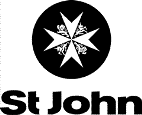Introduction
In an asthma attack the muscles of the air passages in the lungs go into spasm and the
linings of the airways swell. As a result, the airways become narrowed
and breathing becomes difficult.
Sometimes there is a specific trigger for an asthma attack such as:
- an allergy,
- a cold,
- cigarette smoke,
- extremes of temperature or
- exercise.
People with asthma usually deal well with their own attacks by using a blue reliever inhaler, however
you may be required to assist someone having an asthma attack or having an attack for the first time.
Recognition Features
- Difficulty in breathing, with a very prolonged breathing-out phase
There may also be:
- Wheezing as the casualty breathes out.
- Difficulty speaking and whispering.
- Distress and anxiety.
- Cough
- Features of hypoxia, such as a grey-blue tinge to the lips, earlobes and nailbeds (cyanosis).
Treatment
Your aims during an asthma attack are to ease the breathing and if necessary get medical help.
- You need to keep the casualty calm and reassure them.
- If they have a blue reliever inhaler then encourage them to use it. Children may have a spacer device and you should encourage
them to use that with their inhaler also. It should relieve the attack within a few minutes.
- Encourage the casualty to breathe slowly and deeply.
- Encourage the casualty to sit in a position that they find most comfortable, often leaning forward with arms resting on
a table or the back of a chair. Do not lie the casualty down.
- A mild asthma attack should ease within 3 minutes but if it doesn’t encourage the casualty to use their inhaler
again.
Caution:
If this is the first attack, or if the attack is severe and any one of the following occurs:
- the inhaler has no effect after 5 minutes,
- the casualty is becomming worse,
- breathlesness makes talking difficult, or
- the casualty becomes exhausted
Dial 999 (or 112) for an ambulance.
- Encourage the casualty to use their inhaler every 5 to 10 minutes
- Monitor and record the breathing and pulse rate every 10 minutes,
If the patient becomes unconscious open the airway and check their breathing and be prepared to give emergency aid. Please listen to the tips on recovery position, breathing and chest compressions.

